PR, marketing, and advertising all play unique roles in a business. PR focuses on enhancing a company’s image and managing relationships, utilizing methods like media relations and events. Marketing involves marketing research, promotional campaigns, content creation and revolves around meeting customer needs. Advertising, a component of marketing, is about buying space to promote your products or services with the aim to inform and persuade. While their objectives slightly overlap, understanding their distinct contributions will enable you to craft a more effective business strategy. Stick around and you’ll discover more nuances and tips to define these three elements in your strategy.
Understanding the Basics
Let’s get to the heart of it.
You need to understand the basics of public relations, marketing, and advertising to strategically use them in your business.
Think of it this way:
PR is about reputation.
Marketing is about customer needs.
Advertising is about selling your product or service.
What is Public Relations (PR)?
Delving into the basics, Public Relations (PR) is all about managing and enhancing a company’s image by fostering positive relationships with the media, influencers, and the general public. The difference between public relations and other forms of communication lies in the PR work’s unique focus on shaping public perception and building a positive public image.
PR involves a variety of activities, such as media relations, which is the strategic positioning of your company’s news or information in the media to increase public awareness.
In crisis management, PR professionals are tasked with mitigating any negative impact on the company’s reputation. They act as the company’s voice during challenging times, ensuring the delivery of clear and accurate information.
PR also helps build brands by creating and maintaining a positive public image. It has the power to influence public opinion and perceptions about the company by controlling the narrative, sharing positive news, and responding to criticism in a way that reinforces the brand’s values and vision.
Understanding the basics of PR is vital for anyone who wants to successfully navigate this complex and ever-changing field.
What is Marketing?
Unpacking the concept of marketing, it’s essentially a broad array of activities geared towards promoting and selling products or services. It involves strategic planning and execution of various activities, including market research, content creation, and marketing communication, all aimed at reaching your target audiences.
The process starts with market research, where you gather and analyze information about the market, the consumers, and the competition. This data drives your strategic planning, helping you decide what products or services to offer, how to price them, and how to promote them.
Next, you move to content creation, crafting compelling messages that resonate with your target audiences. Through digital marketing, you disseminate these messages across various channels, such as social media, email, and your website, to reach potential customers wherever they are.
You then run promotional campaigns, which are coordinated efforts to drive sales and increase brand awareness. These campaigns use a mix of marketing communication techniques to engage your audience, persuade them to buy, and ultimately build loyalty to your brand.
What is Advertising?
Diving into the realm of advertising, you’ll find it’s a critical component of marketing that centers around buying space for the promotion of products or services. It’s a form of advertising that’s paid, contrary to public relations which primarily relies on earned media.
Advertising campaigns are designed to send specific advertising messages to a targeted audience, with the aim of persuading or informing them about a product or service. These messages can take various forms, such as traditional advertising on TV, radio, and print media, or digital advertising on online platforms and social media.
The difference between advertising and public relations, marketing, and PR lies in the approach. While PR focuses on maintaining a positive image and building relationships, advertising is more direct, aiming to stimulate immediate action from consumers.
It’s important to understand that advertising vs. PR isn’t a competition; they’re complementary strategies that, when used together, can significantly enhance your brand’s reach and impact.
Key Objectives
Now let’s explore the key objectives of PR, marketing, and advertising.
You’ll find that each has unique goals, though they all contribute to the overall success of your business.
Knowing these objectives can guide your strategy and help you make informed decisions.
Objectives of Public Relations
Understanding the key objectives of Public Relations is crucial, as it primarily focuses on building and maintaining a positive reputation for your organization. Public relations is a strategic communication process that you use to manage and build relationships with various stakeholders. Well-executed PR campaigns can significantly enhance your company image, making it more attractive to customers and investors alike.
A major goal of public relations is crisis communication. In an era where news travels fast, it’s essential to manage potential crises proactively and ensure accurate information is disseminated. This helps maintain a positive reputation even in challenging circumstances.
Public relations also aims to foster strong stakeholder relationships. This includes not only your customers and investors but also the media. By cultivating these relationships, you can control your narrative and amplify positive news about your organization.
Objectives of Marketing
Just as public relations aims to build a positive company image, marketing has its own set of objectives that are centered around satisfying customer needs and driving profitability.
Your marketing efforts work towards understanding your consumers’ needs and preferences. This is where inbound marketing comes into play, attracting customers by creating valuable content and experiences tailored to them.
Your marketing plan should focus on developing products or services that meet customer demands, priced competitively, and distributed strategically to maximize accessibility.
Remember, advertising and marketing are intertwined. While advertising focuses on promoting the product, your marketing approach encompasses advertising strategies and the broader aim of understanding and fulfilling customer needs.
Much like effective PR strategies, good marketing also involves communication. However, it’s not just about sending a message; it’s about starting a dialogue, encouraging customer engagement, and fostering lasting relationships.
PR professionals might engage in PR activity to manage your company’s image, but your marketing work goes beyond image management. It strives to deliver real value to customers, thus driving your company’s profitability and growth.
In essence, the ultimate goal of marketing isn’t just to sell products, but to satisfy customer needs in a way that also benefits your business.
Objectives of Advertising
Much like marketing and PR, advertising plays a crucial role in your business strategy, with its primary objectives centered around persuading your target audience to purchase your product or service. While PR focuses on creating a positive image and building relationships, and marketing promotes overall brand awareness and product availability, advertising is a marketing tool specifically designed to compel your target audience to buy.
The objectives of advertising include creating product awareness, generating interest, and ultimately driving sales. These objectives align with successful marketing goals, as they all work towards the same end – increasing your bottom line.
Traditional marketing methods might include print ads, TV commercials, or radio spots, but in today’s digital age, online advertising has also become a key player.
PR helps to create a favorable public image for your company, and marketing encompasses strategies to identify and satisfy customer needs. Advertising then takes these strategies and focuses them into a sharp, direct message: buy this product.
The coordination of advertising and PR, along with your marketing efforts, can lead to a powerful and effective strategy to capture consumer interest and drive business growth.
Target Audiences
Understanding your target audience is the key to successful PR, marketing, and advertising campaigns.
So, let’s discuss how each of these disciplines identifies and appeals to their specific audiences.
You’ll see how crucial it is to tailor your message to the right people.
Target Audience for PR
When crafting a PR strategy, it’s essential to identify and understand your target audience, which can include a wide range of stakeholders like the media, industry influencers, customers, employees, and the general public. These diverse constituents play a significant role in shaping the public’s perception of your brand and, ultimately, your brand’s reputation.
Your PR efforts should aim for positive coverage from the media, as they can amplify your message to a broader audience. Industry influencers, with their massive following, can also bolster your brand visibility and credibility.
As for customers and employees, they’re the heart of your PR target audience. Their feedback, testimonials, and stories can sway public opinion in your favor. Ensuring their engagement with your brand is crucial as it fosters loyalty and advocacy.
Lastly, don’t overlook the general public. Even if they’re not directly linked to your product or service, their views can influence potential customers. By engaging this vast group, you can reinforce your brand reputation on a larger scale.
Target Audience for Marketing
In your marketing efforts, it’s critical to identify and cater to your target audience, which typically includes potential and existing customers. By understanding who they are, what they want, and how they behave, you’re able to tailor messages that resonate with them and drive engagement.
Your target audience isn’t a single, homogenous group but a collection of diverse individuals with unique characteristics and needs. To effectively reach them, you need to segment your audience based on demographics like age, gender, location, and income. But don’t stop there. Delve deeper into psychographics, which include values, attitudes, interests, and lifestyle, to really understand what motivates your customers.
Additionally, consider their behavior such as purchasing habits, brand interactions, and product usage. This can provide invaluable insight into what triggers them to make a purchase or engage with your brand.
Target Audience for Advertising
Just like marketing, your advertising efforts need to zero in on a specific target audience, shaping messages to resonate with their unique needs and preferences. Your advertising team plays a crucial role in this, crafting compelling content that appeals to these individuals.
Targeted advertising forms a significant part of the overall marketing mix. It involves using different strategies to reach the right people on different platforms. Whether it’s a social media campaign or a TV ad, each tactic should be designed with a clear understanding of who you’re trying to engage.
While similarities exist between advertising and public relations, it’s important to note their unique roles within your marketing strategies. PR focuses on managing your company’s reputation, while advertising aims to increase brand awareness and drive sales.
Knowing your target audience is crucial. It informs your approach, enabling you to tailor your messages to the right demographic, interests, and behaviors. By narrowing your focus, you can optimize your ad spend, ensure your message is heard by those most likely to act, and ultimately, enhance the effectiveness of your entire marketing campaign.
Methods and Channels
Now, let’s explore how PR, marketing, and advertising each use distinctive methods and channels to connect with their audiences.
You’ll see that each has its unique blend of strategies, tools, and platforms.
This knowledge will help you understand their roles and how they complement each other.
PR Methods and Channels
You’ll find that PR employs various methods like press releases, media relations, and social media engagement to effectively communicate with target audiences. While PR and advertising might seem similar, they use different channels to reach their goals. PR methods focus on building relationships and managing a company’s reputation, often through earned media.
As a public relations professional, you might work closely with journalists and influencers to boost your brand’s visibility. This is where influencer marketing comes into play. You’ll leverage the popularity of these influencers to promote your brand, a tactic that can be highly effective.
PR channels include traditional media outlets, social media platforms, and events. These channels provide a platform to distribute your PR materials, whether it’s a press release or a social media post.
In PR and marketing, the use of social media marketing is on the rise. It’s an excellent way to engage with your audience and promote your public relations campaigns. The key is to create marketing materials that resonate with your audience, ensuring your message is heard and understood.
Just remember, PR is about building relationships and trust, not just about promoting products or services.
Marketing Methods and Channels
Shifting focus from PR, it’s important to understand that marketing also employs a variety of methods and channels like content marketing, social media, email marketing, and SEO, all aimed at building brand awareness, generating leads, and nurturing customer relationships.
Content marketing, for instance, involves creating and sharing valuable free content to attract and convert prospects into customers, and customers into repeat buyers.
Email marketing, on the other hand, is a way to reach consumers directly via electronic mail, and it’s cost-effective, allowing you to allocate your marketing budget effectively.
Just like public relations teams, marketing professionals also need to engage in strategic communication. Understanding the difference between PR and general marketing is crucial to ensure an effective and well-rounded strategy.
There’s also an overlap between PR and marketing, and both function towards achieving the company’s overall goals. That’s why, successful PR campaigns often support and enhance marketing efforts.
Advertising Methods and Channels
Understanding the landscape of advertising methods and channels, including digital, traditional, and ambient advertising, is vital for creating compelling messages that encourage immediate consumer action. The differences and similarities among these methods guide your strategies and tactics. As a savvy entrepreneur, you must know how each piece fits in the larger marketing puzzle.
Digital advertising, a realm where PR is concerned, tends to be interactive and data-driven. It’s also where public relations agencies and advertising teams often work closely together to create cohesive campaigns.
Traditional advertising, on the other hand, is focused on broader audience reach using mediums like print, TV, and radio. Though it’s less targeted, it still holds value in certain markets.
Ambient advertising, a more creative method, uses unconventional spaces to deliver messages. It’s where PR builds intrigue and buzz around your brand.
Measuring Success
When it comes to PR, marketing, and advertising, it’s crucial to know how to gauge your success.
You’ll find that each field has unique metrics and key performance indicators (KPIs).
In the following sections, we’ll discuss how to measure success in each of these areas.
Measuring PR Success
To effectively measure the success of your PR campaigns, you’ll need to focus on key metrics such as media coverage, social media engagement, website traffic from earned media, and improvements in brand sentiment. These metrics provide tangible evidence of your PR efforts and their impact on your brand’s reputation.
Media coverage is a clear indication of how much attention your PR activities are garnering. This includes mentions in press articles, TV segments, radio shows, or online publications. The more coverage you get, the more successful your PR campaign is considered.
Social media engagement refers to likes, shares, comments, and followers on your brand’s social media accounts. High engagement levels indicate that your brand message is resonating with your audience.
Website traffic from earned media shows the number of visitors directed to your site from non-paid sources. An increase in this traffic suggests your PR efforts are effectively drawing attention to your brand.
Measuring Marketing Success
In gauging the success of your marketing efforts, you need to focus on key metrics like lead generation, conversion rates, customer acquisition costs, and overall return on investment (ROI). These metrics provide concrete data that can help you understand how your efforts are performing and where improvements can be made.
Lead generation measures the number of potential customers that your marketing efforts attract. It’s crucial, as it’s the first step in the sales process. High numbers suggest effective outreach and awareness campaigns.
Conversion rates track how many leads turn into customers. A high rate means your marketing tactics not only attract but convince customers to make a purchase, indicating an effective sales funnel.
Customer acquisition cost calculates how much you spend to gain a new customer. It’s a key metric as it directly impacts your profits. If it costs more to acquire a new customer than they bring in revenue, you’re losing money.
Measuring Advertising Success
Just as you measure marketing efforts, it’s equally important to evaluate the success of your advertising campaigns. Key metrics like click-through rates (CTR), cost per click (CPC), conversion rates, and overall campaign ROI help gauge how effective your ads are in driving consumer action and achieving business objectives.
CTR measures the number of times users click on your ad relative to the number of times it’s shown. If you’ve got a high CTR, you’re likely grabbing your audience’s attention.
CPC, on the other hand, tells you how much you’re paying for each click. It’s a crucial metric in paid advertising, helping you manage your budget effectively.
Conversion rates show the percentage of users who perform a desired action after clicking on your ad, such as making a purchase or filling out a form. A high conversion rate indicates that your ad isn’t only attracting attention, but it’s also compelling enough to encourage action.
Lastly, the ROI of your campaign ultimately determines if your advertising efforts are paying off. By comparing the revenue generated by your ads to the costs, you can assess the financial impact of your campaigns.


